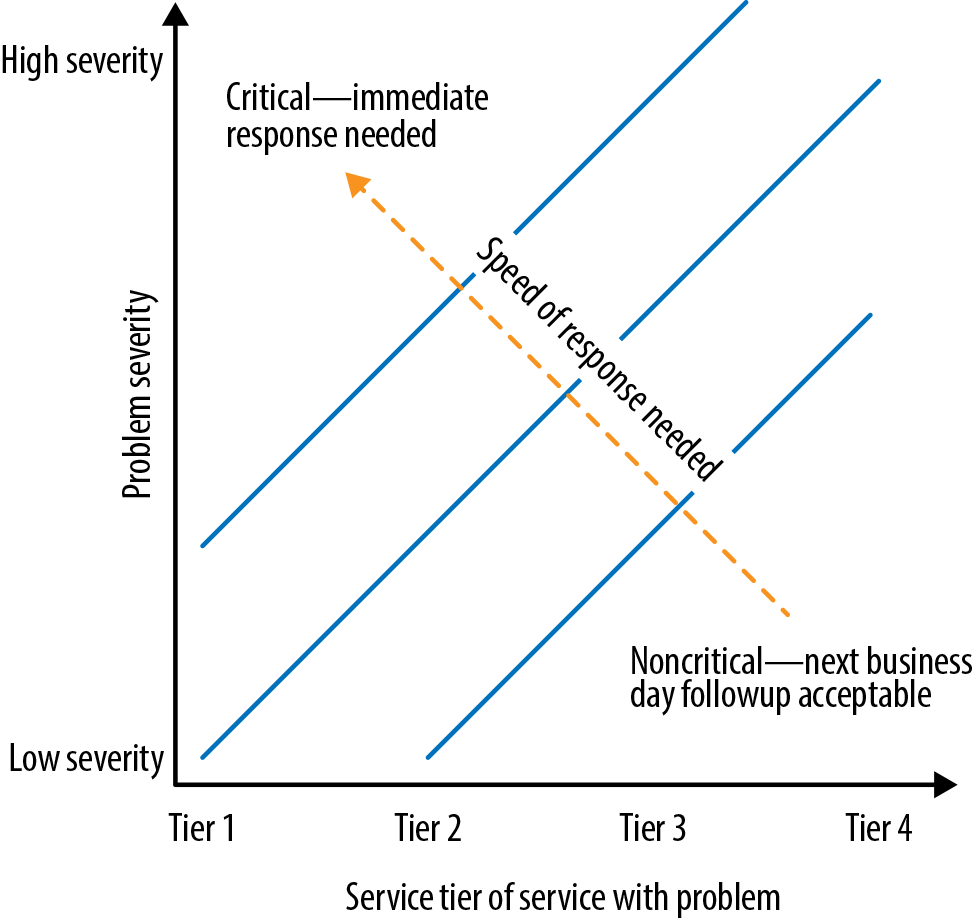Chapter 17. Using Service Tiers
After you have assigned service tiers for all your services, how do you use them? There are a few ways:
- Expectations
-
What is the expected uptime for the service? What is its reliability? How many problems does it have? How often is it allowed to fail?
- Responsiveness
-
How fast or slow should you respond to a problem, and what courses of actions are available to you in resolving the issue?
- Dependencies
-
What are the service tiers of your dependencies and those who depend on you, and how does that affect your service interactions?
Letâs look at each of these.
Expectations
Your serviceâs expectations are an important part of your service to your customers. Service-level agreements (SLAs) are one way to manage these expectations. This is so important that Chapter 18 is entirely dedicated to this topic.
Responsiveness
When a problem occurs in your system, your responsiveness to the issue depends on these two factors:
-
The severity of the issue
-
The tier of service that is having the issue
A high-severity problem on a Tier 1 service should be treated as more important than a high-severity problem on a Tier 3 service. That is clear. But if a Tier 1 service has a medium severity problem, this might need a higher level of responsiveness than a high-severity problem on a Tier 3 service. Figure 17-1 demonstrates this.

Figure 17-1. Responsiveness ...
Get Architecting for Scale now with the O’Reilly learning platform.
O’Reilly members experience books, live events, courses curated by job role, and more from O’Reilly and nearly 200 top publishers.

